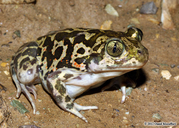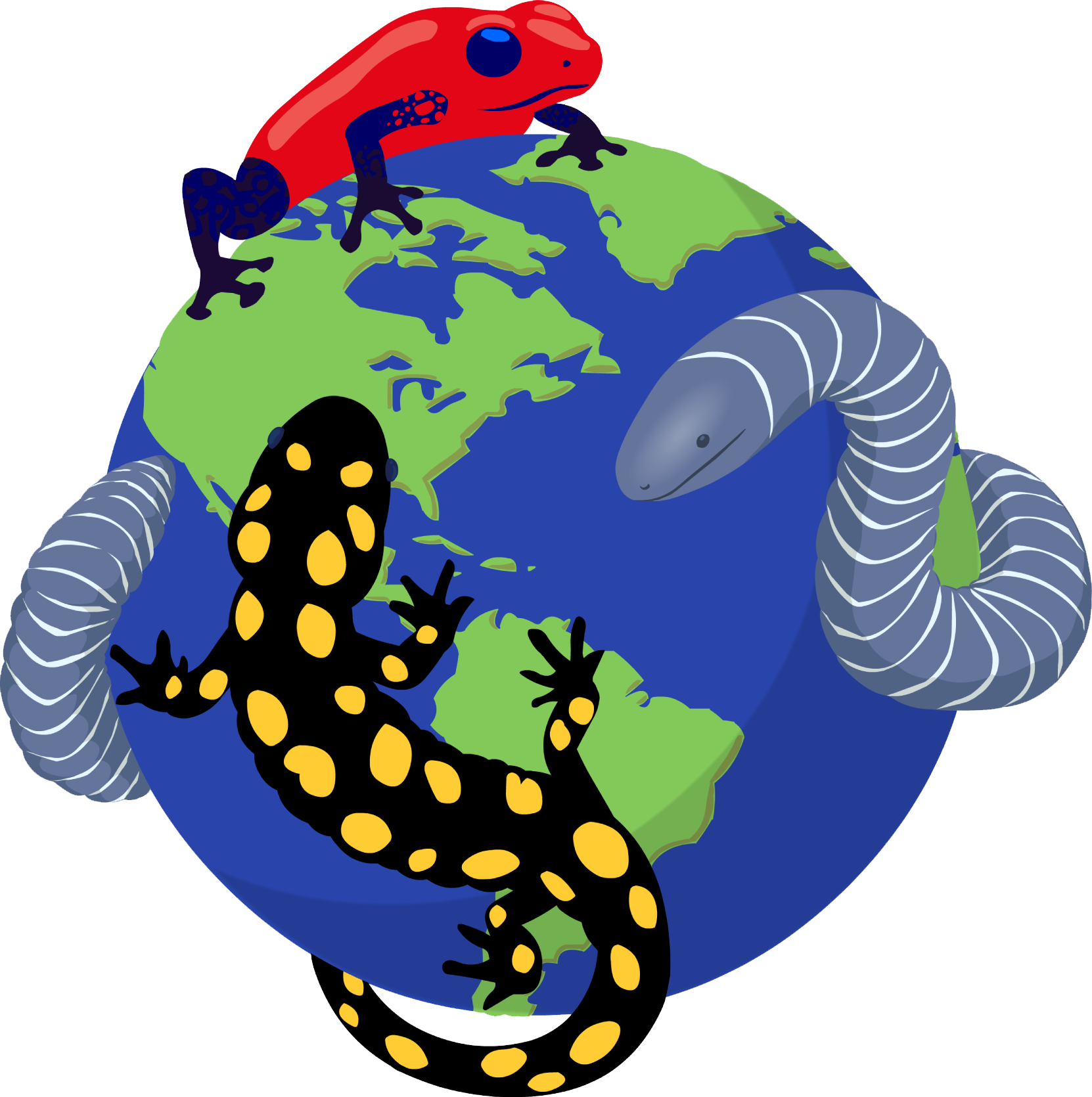|
Pelobates syriacus Boettger, 1889
Eastern Spadefoot | family: Pelobatidae genus: Pelobates |
 © 2012 Omid Mozaffari (1 of 15)
|
|
|
|||||||||||||||||||||
|
Description Distribution and Habitat Country distribution from AmphibiaWeb's database: Armenia, Azerbaijan, Bulgaria, Georgia, Greece, Iran, Islamic Republic of, Iraq, Israel, Lebanon, Russian Federation, Syrian Arab Republic, Turkey
This species lives in forested, steppe and semi-desert areas in foothills and mountain valleys. It probably avoids the forest belt and is distributed in open landscapes, and appear to be less selective than P. fuscus in terms of soil preference. It inhabits not only soft soils suitable for a fossorial life (although they are preferred), but also solid, rocky soils, in particular more or less friable clay with pebbles. Life History, Abundance, Activity, and Special Behaviors Eastern Spadefoots hibernate in soil, in plant debris, and below tree roots and large rocks. As a rule, they hibernate singly, but sometimes groups of 2-6 individuals are found. Reproduction occurs from February to mid-May, depending on latitude. The toad breeds in stagnant water bodies. During the reproductive period, the male shoulder gland becomes more prominent. The clutch contains about 5500-6500 eggs and is similar in shape to the clutch of P. fuscus. Metamorphosis is completed in summer or in autumn. Many toadlets bury themselves on the pond shores. In some water bodies tadpoles overwinter and complete metamorphosis the following year. Tadpoles consume mainly algae and plant debris. Adults forage on land surface dwellers, including Mollusca, Myriapoda, Aranae, Orthoptera etc. Trends and Threats Relation to Humans Possible reasons for amphibian decline Drainage of habitat
References
Bannikov, A. G., Darevsky, I. S. and Rustamov, A. K. (1971). Zemnovodnye i Presmykayushchienya SSSR [Amphibians and Reptiles of the USSR]. Izdatelistvo Misl, Moscow. Bannikov, A. G., Darevsky, I. S., Ishchenko, V. G., Rustamov, A. K., and Szczerbak, N. N. (1977). Opredelitel Zemnovodnykh i Presmykayushchikhsya Fauny SSSR [Guide to Amphibians and Reptiles of the USSR Fauna]. Prosveshchenie, Moscow. Basoglu, M. and Ozeti, N. (1973). Turkiye Amphibileri. Ege Univ, Bornova-Izmir. Gasc, J. P. , Cabela, A., Crnobrnja-Isailovic, J., Dolmen, D., Grossenbacher,K., Haffner, P., Lescure, J., Martens, H., Martinez Rica, J. P.,Maurin, H., Oliveira, M. E., Sofianidou, T. S., Vaith, M., and Zuiderwijk, A. (1997). Atlas of Amphibians and Reptiles in Europe. Societas Europaea Herpetologica and Muséum National d’Histoire Naturelle, Paris. Kuzmin, S. L. (1995). Die Amphibien Russlands und angrenzender Gebiete. Westarp Wissenschaften, Magdeburg. Kuzmin, S. L. (1999). The Amphibians of the Former Soviet Union. Pensoft, Sofia-Moscow. Leviton, A. E., Anderson, S. C., Adler, K. and Minton S. A. (1992). Handbook to Middle East Amphibians and Reptiles. Society for the Study of Amphibians and Reptiles, Oxford, Ohio. Nöllert, A. and Nöllert, C. (1992). Die Amphibien Europas. Franckh-Kosmos Verlags-GmbH and Company, Stuttgart. Tarkhnishvili, D. N. and Gokhelashvili, R. K. (1999). ''The amphibians of the Caucasus.'' Advances in Amphibian Research in the Former Soviet Union, 4, 1-233. Terent'ev, P. V. and Chernov, S. A (1965). Key to Amphibians and Reptiles [of the USSR]. Israel Program for Scientific Translations, Jerusalem. Originally submitted by: Sergius L. Kuzmin (first posted 1999-10-06) Edited by: Meredith J. Mahoney (2021-01-26) Species Account Citation: AmphibiaWeb 2021 Pelobates syriacus: Eastern Spadefoot <https://amphibiaweb.org/species/5271> University of California, Berkeley, CA, USA. Accessed Apr 1, 2025.
Feedback or comments about this page.
Citation: AmphibiaWeb. 2025. <https://amphibiaweb.org> University of California, Berkeley, CA, USA. Accessed 1 Apr 2025. AmphibiaWeb's policy on data use. |




 Map of Life
Map of Life